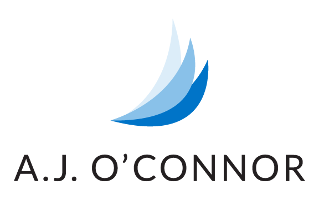
How the Best Leaders Lead
We recently came across an inspirational 9-minute TED talk with a title that caught our eye: Why The Best Leaders Make Love The Top Priority.
In his talk, acclaimed author, speaker, and social entrepreneur Matt Tenney presents a compelling case for why making love a higher priority than profit is not only a more noble and fulfilling way to lead, it’s actually the surprising secret of the best leaders.
How do you lead as a leader? What are the priorities of your organization when it comes to employees, customers, and profits or other organizational goals?
We wanted the opportunity to learn more from Matt and to get his additional thoughts and perspectives on this nuanced and important topic. We invite you to watch the clip first and we think you’ll enjoy the follow-up Q&A with Matt that follows.
AJO: What has your personal leadership journey taught you about putting people first? Can you share an example?
Matt: The biggest lesson I continue to learn while on my own leadership journey is how difficult it is for people like me to consistently put people first. As I mentioned in the talk, I’m hardwired to be very Type A and goal-driven.
I thrive on being challenged to accomplish big goals, and my natural tendency is to sacrifice my own well-being to achieve the goal if necessary. Naturally, I tend to expect others to see things the same way.
I have to continually remind myself that this is simply not a sustainable way to lead myself or others.
For me, the work is to continually learn to balance the somewhat positive trait of being a high achiever, with being more realistic about creating sustainable high performance for teams.
I have found that this becomes easier and easier as my motivation shifts away from trying to “get something more” from team members and more toward improving their well-being simply because it is the right, and more enjoyable, thing to do.
AJO: What do you say to organizations that put customers first – i.e. before employees?
Matt: I start by saying, “Congratulations! You’re most of the way there!” Putting the customer first is significantly better than putting profit first.
So, if an organization is able to put the customer first, they are much more likely to be able to make the transition to putting employees first.
In fact, they can actually leverage their strengths for extreme customer focus and striving to add massive value for customers to do the same for their employees.
For organizations that truly want to serve their customers at the highest level, it is not hard to see how taking very good care of employees is a critical component of achieving that goal.
For organizations that truly want to serve their customers at the highest level, it is not hard to see how taking very good care of employees is a critical component of achieving that goal. @MattTenney1 @AJO_NJ http://bit.ly/how-best-leaders-lead
It is very unlikely, over time, that the experience of the customer will ever consistently exceed the experience of the employee in the workplace.
In other words, to deliver an amazing experience for customers, leaders need to deliver an amazing experience for employees.
I would also point out that when prioritizing employees first, the preference for employees over customers is very slight, and does not negate an extreme customer focus, which is extremely important for success in today’s economy.
However, I do not think it is hard to see that if we consistently sacrifice the well-being of employees for the benefit of customers, employees will eventually fail to serve the customer as well as we would like.
Thus, in order to provide the highest and most sustainable levels of amazing customer experience, it is actually best to prioritize employees slightly ahead of customers.
AJO: How can profit-focused organizations begin the journey of shifting their culture and their priorities? Where does the journey begin?
Matt: The first step is to be very intentional about serving and taking great care of employees.
This needs to be written in as many places as possible, such as job descriptions, SOP’s, and core values and reviewed very often.
Leaders in the organization need to run every decision they make through the following filter, a simple question: How will this impact the long-term well-being of team members?
Although they might not be able to always act in ways that have positive impacts on the long-term well-being of all employees, simply running decisions through that filter can have a huge impact on how decisions are approached.
I also recommend that leaders change their job descriptions, at least informally, so that the primary description of the job is to “help the people that work with that leader to thrive.” Everything else should be included in the additional responsibilities.
Reciting this new job description multiple times every day can help open the mind to opportunities to serve employees and to do the work necessary to continue improving one’s capacity for creating an environment where employees feel truly cared for.
Also, nothing indicates true intention better than measurement.
In order to see true change, leaders need to measure how well they are taking care of employees by asking direct reports for anonymous feedback.
Promotions and bonuses should be tied not only to the achievement of financial goals but also to how well the direct reports of leaders state that the leader is serving and taking care of them.

AJO: What role should HR play in transforming their organization’s priorities? What specific actions can HR take to influence change?
Matt: Human resources professionals can and should be an instrumental part of transforming an organization to become people first, and helping the organization sustain its ability to put people first.
First, leaders in HR should be leading by example in this area.
Second, HR professionals can help find ways to inspire and remind other leaders in the organization to see why putting people first will help them succeed both professionally and personally, and provide guidance for how to continue to improve one’s ability to serve and take good care of employees with systems and training that serve that aspiration.
Also, HR professionals can do a lot to free up time for senior leaders by helping create and implement the processes mentioned above for implementing and measuring the organization’s efforts to put people first.
AJO: What competencies and values do organizational leaders need to embrace to become employee-first organizations?
Matt: Although these are going to be somewhat different for every organization, and indeed for every employee, there seem to be some universal needs that humans have.
An organization that is truly committed to putting people first is one in which the leaders are committed to helping employees meet these legitimate, universal needs.
After moving beyond the first steps mentioned above on working to avoid having a negative impact on the long-term well-being of employees, organizational leaders can move on to the more aspirational values and competencies required for improving the long-term well-being of team members.
They can begin to focus on creating an environment in which human beings are thriving.
Achieving this requires that leaders value improving the happiness of employees both at home and at work, as well as helping employees to grow both personally and professionally.
In addition to these values, leaders need to develop some key emotional intelligence competencies, such as self-awareness, self-regulation, empathy, and effective listening.
These emotional intelligence competencies are what close the gap between wanting to take good care of employees, which I truly believe most leaders want to do and actually doing it on a consistent basis.
Of course, as anyone who has embarked on the journey of improving emotional intelligence competencies knows, the term “softs skills” is a very poor choice of words for these skills.
They are significantly more challenging to develop than traditional business acumen and management skills.
However, developing these competencies is well worth the investment of time and effort.
They are a key part of transforming our work as leaders from just being a “job,” to being higher calling that is improving the lives of our employees and thereby improving society as a whole.

